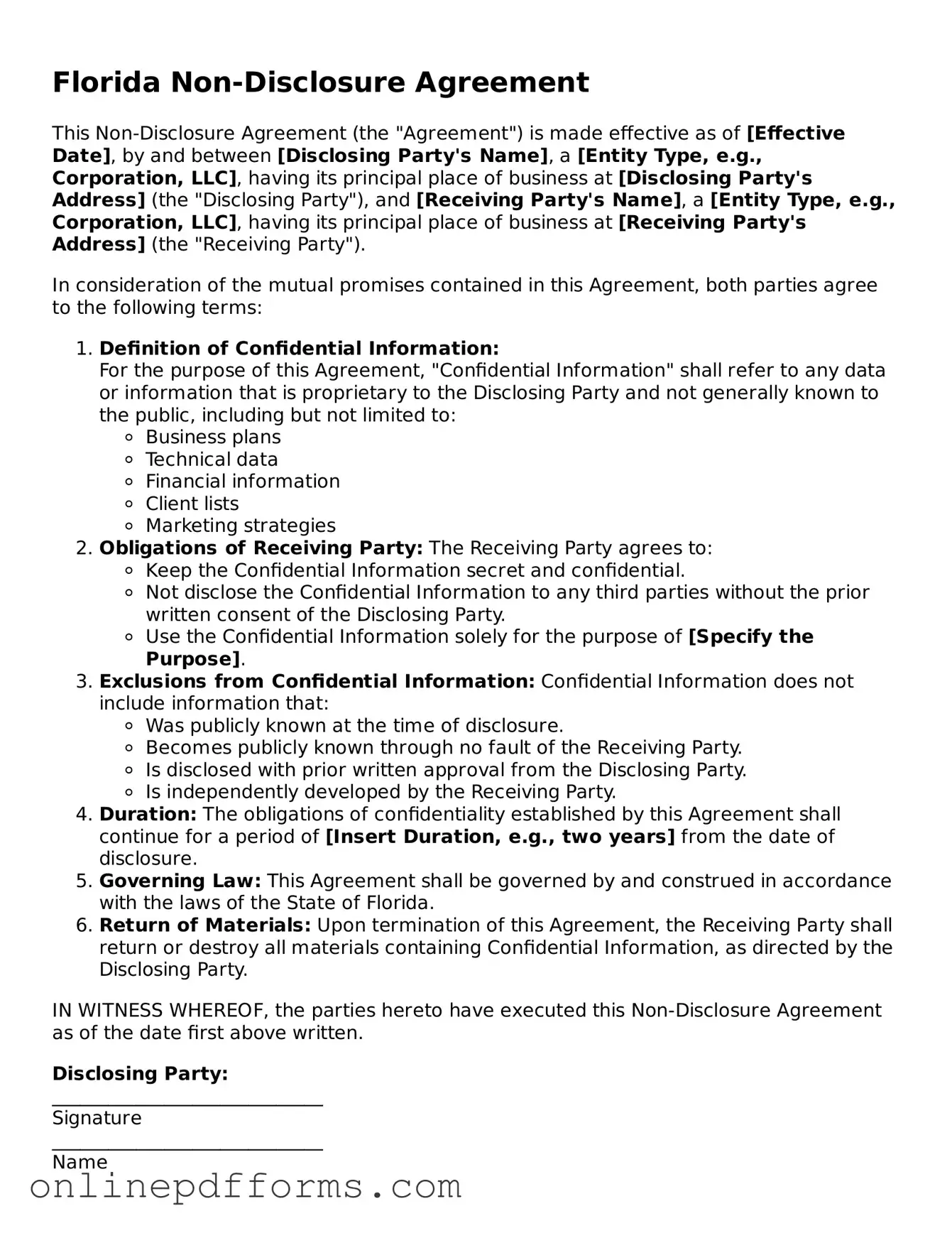Steps to Filling Out Florida Non-disclosure Agreement
Once you have the Florida Non-disclosure Agreement form in hand, it's time to complete it accurately. This process ensures that all parties involved are clear on the terms and conditions. Follow the steps below to fill out the form correctly.
- Begin by entering the date at the top of the form. This establishes when the agreement takes effect.
- Next, identify the parties involved. Fill in the names and addresses of both the disclosing party and the receiving party. Make sure this information is accurate to avoid any confusion later.
- Clearly define the purpose of the agreement. This section outlines why the information is being shared and what it pertains to. Be concise but specific.
- In the designated area, specify what constitutes confidential information. List the types of information that will be protected under this agreement.
- Next, indicate the duration of the confidentiality obligation. Decide how long the receiving party must keep the information confidential after the agreement ends.
- Review any exceptions to the confidentiality obligations. This may include information that is already public or independently developed by the receiving party.
- Both parties should sign and date the form at the bottom. Ensure that the signatures are legible and that each party receives a copy for their records.
After completing these steps, the Non-disclosure Agreement will be ready for use. Each party should retain a signed copy to ensure clarity and compliance with the terms outlined in the agreement.
